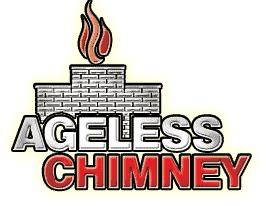Chimney Services in Meatpacking District, NY
What our clients say




Read About Us
Browse Fireplace Services
contact us
Why Choose Local Chimney Services in Meatpacking District NY

Trusted Chimney Experts
At Ageless Chimney, we provide quality chimney services in Meatpacking District, NY. Our skilled professionals ensure your chimney is safe and functional, offering services from thorough cleaning to essential repairs. We focus on meeting your specific needs with reliable and efficient solutions.
Understanding the importance of chimney safety, we deliver high-quality results that residents of New York City can trust. Our expertise in local conditions and commitment to excellence make us the preferred choice for chimney services in the area. Trust Ageless Chimney to keep your home safe and your chimney in perfect working condition.
Experienced Professionals
Our team has years of experience providing chimney services in Meatpacking District, NY.
Local Expertise
We understand the specific needs of homes in New York City and offer tailored solutions.
Customer Satisfaction
At Ageless Chimney, we prioritize your satisfaction and safety, ensuring quality service every time.

Comprehensive Chimney Services
From chimney sweeping to advanced repairs, Ageless Chimney offers a full range of chimney services in Meatpacking District, NY. Regular chimney maintenance is crucial to prevent fire hazards and ensure proper ventilation in your home. Our team of experts is equipped with the latest tools and techniques to provide efficient and thorough service.
We offer comprehensive chimney inspections to identify any potential issues early. Our inspections cover every aspect of your chimney, including the flue, masonry, and chimney cap. By identifying problems early, we can perform necessary repairs before they become major concerns, saving you time and money in the long run.
In addition to cleaning and inspections, Ageless Chimney also provides expert repair services. Whether your chimney needs minor repairs or a complete rebuild, we have the skills and experience to do the job right. Our services are designed to extend the life of your chimney and ensure it operates safely and efficiently. Trust us to keep your chimney in top condition in Meatpacking District, NY.

Local and Reliable Service
Choosing a local company like Ageless Chimney means you get personalized service tailored to the specific needs of New York City residents. We understand the local building codes, weather conditions, and common issues that affect chimneys in our area. This local expertise allows us to offer superior service that national chains can’t match.
Our team is dedicated to providing prompt and reliable service. We are always ready to respond to your calls, whether you need routine maintenance or emergency repairs. You can reach us at 516-795-1313 to schedule an appointment or for immediate assistance. Our goal is to ensure your chimney is always safe and functioning properly.
At Ageless Chimney, customer satisfaction is our top priority. We take pride in our work and strive to exceed your expectations with every service we provide. Our commitment to quality and attention to detail has earned us a reputation as the trusted chimney experts in Meatpacking District, NY. Let us show you why so many homeowners in New York City rely on us for their chimney needs.
